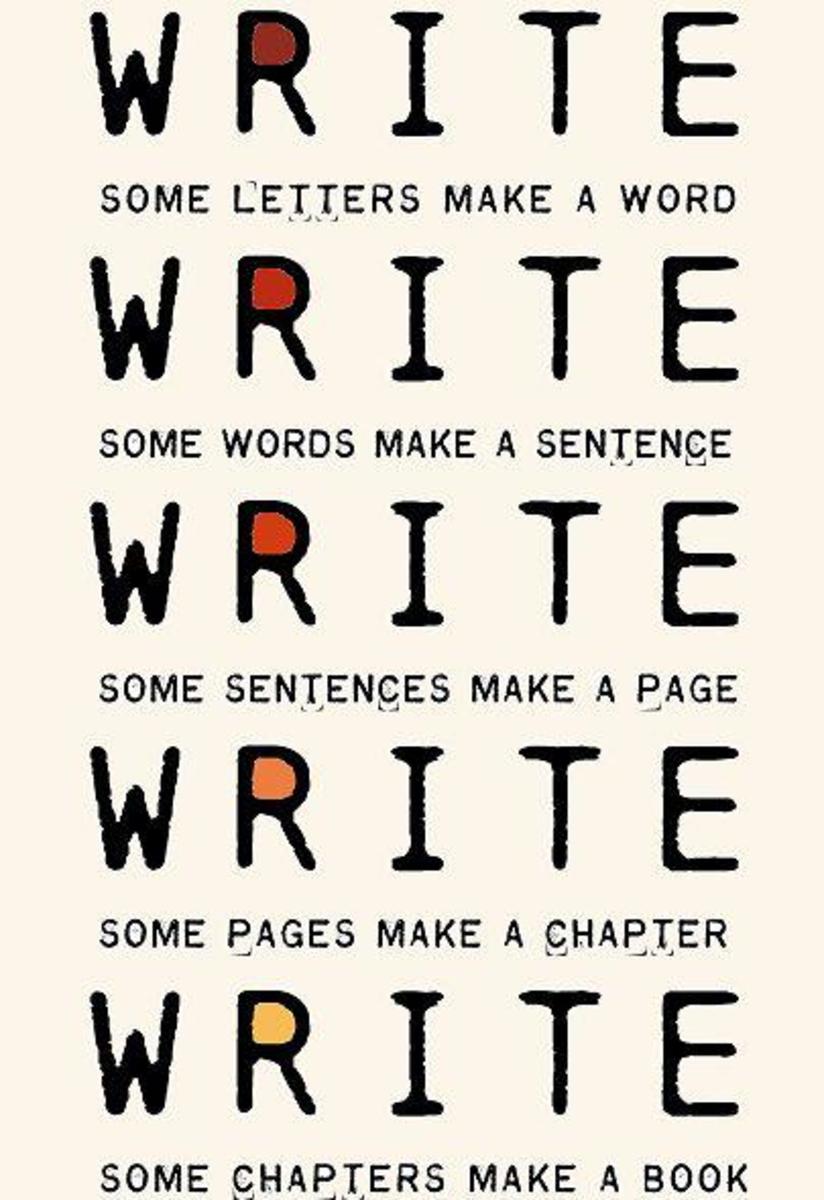Trust the Characters in Your Novel to Tell the Story
The Teacher Is Taught a Lesson
As many of you know, I am now in the final edit of my new novel, “Resurrecting Tobias.” Before the final edit began, I asked some of my online writing friends to preview the manuscript, and give me their opinions. One of those opinions was an eye-opener, and it came from my friend Audrey:
“Sometimes, when you move away from the patter, it gets a little preachy--for lack of a better word--for me--and it does it in a way that feels very split off from the character for me--it tends to put me off--I would much rather that your message be delivered in Toby's voice and in how he views the world as he struggles his way through--
I think you can trust the characters all the way through to tell their story more--I felt that would be one way to get more depth--the old show me don't tell me thing—“
I draw your attention to the phrase “trust the characters all the way through to tell their story more.”
True words for sure, and a message that I have known for years, but…..
When we get wrapped up in writing a novel, it is amazing how quickly we forget some very basic lessons in storytelling.
Trust the characters!

First, Though, You Have to Know the Characters
I have written before about characterization, but it bears repeating. The characters in any novel have a job to do, and that job is to tell the story. The reader sees through the eyes of your characters. The reader hears through the characters, and feels through the characters. That, my friends, is a huge responsibility that we place on fictional beings, but they are fully capable of delivering for you if you flush them out and make them real.
Before you ever write the first word of your novel, I suggest that you sit down and write a biography of your main characters. Interview them and get to know them. Once you know them as real people you will then be able to predict how they will react in certain situations. What would they do if a loved one died? How would they react if faced with a life-threatening situation? What would they say if they lost their job?
Only after you take this crucial step can you move on, and allow your characters to tell the story in their own words.
Back to Audrey’s Point
On the first draft of the manuscript, there was a section early on where I detoured into a discussion about Native Americans and their plight. It went something like this:
“You don’t need me to tell you that Native Americans, or Indians if you prefer, have pretty much gotten the short end of the deal over the years here in the United States. If there was a way to screw them then our forefathers found it, exploited it and grew rich from it. We eliminated their food supply, stole their land, taught them the White Man ways and refused them their heritage. Still, I’m not much on paying dues for century-old crimes either. I wasn’t doing the screwing back in 1840 and I see no reason why I should foot the bill for sins rendered then. Moon happens to agree with me on this point, as does Pete; one of those rare times when I am in the majority on an issue.
The three of us also agree that native sovereignty is a failure and will never work in this country. Too many chiefs and not enough Indians is what my dad would have said, and he would have been damn close to the truth. Tribal councils, the BIA, a few other agencies, all fighting for a piece of the pie; jurisdictions overlap, a few get rich, and meanwhile sexual abuse, drug abuse, alcoholism and abject poverty hold sway over the reservations. Places like Spirit Lake Reservation in North Dakota and Leech Lake Reservation in Minnesota make the Dark Ages of Europe look like a weekend at Disneyland.”
Long-winded for sure, and it is a perfect example of what Audrey was talking about. The point was one I felt important to make, but by making it in such a manner, I managed to ruin the flow of the story. Keeping Audrey’s suggestions in mind, I changed that passage to read this way, a conversation between the main character, Toby, and his friend and Native American activist, Yellow Moon:
“How’s the battle, Moon? How goes it with the Cause?”
“Toby, just between the three of us, the Cause is screwed. There are too many white men. There are too many tribes who can’t agree on a damned thing. Sure, we were shafted in the past, but what’s new? It’s pretty damned obvious that the government isn’t going to do anything about it, so that leaves the tribes to take care of their own, and in case you haven’t noticed, life on a reservation is no trip to Disneyland. Still, if we don’t keep battling, I know for sure nothing good will come of it all…so we keep on keeping on, buddy.
I’m sure you’ll agree that this leaner, meaner conversation between two friends says the same thing, but says it in a way that is consistent with the flow of the story. In other words, I have allowed the characters to deliver the message without having Toby go off on a long-winded tangent.

One More Example to Drive Home the Point
About a month ago I completed the first draft of the novel. Over 139,000 words had been written, the story had been told, and yet I had one of those uneasy feelings about it. After several days of contemplation, I realized I really knew nothing about one of the three main characters. I had done a good job of developing Toby and Pete, but Maria somehow was left out in the cold. I had told her story through the eyes of Toby, and was left with an empty feeling. Finally it dawned on me to let Maria tell her own story in her own words. Once that decision was made, Maria became a real person to me, and I could relate to her immediately.
In other words, I had to trust Maria to do the job that I was incapable of doing as the writer. Through Maria’s conversations with the other characters, we finally learn what makes her tick and what motivates her.
Trust your characters!

Join me on my writing blog
- Artistry With Words | A topnotch WordPress.com site
Writing tips, by writers, for writers
It’s All About Flow and Rhythm
When I think about the flow of a story, I think back to the decade of the 60s, and some of the concerts I attended. During that time, many bands, during live performances, would do extended versions of some of their hits, and those extended versions would include lengthy solos by some of the individuals. There would be five minute solos by the drummer, followed by five minute solos by the lead guitarist and the bass player. It would be interesting at first, but after awhile, the song was lost because the flow was drowned out by the solo performances. Trust me, after a five minute solo by a drummer, it is very hard to remember what song was being played.
It is the same way with a novel. The flow of the story and, in fact, the story itself, can be lost if one character takes off on a lengthy monologue. There is no need to do that if you have faith in your characters.
Take your characters out to lunch and chat with them. Tell them what you want to accomplish and then turn them loose. You’ll be glad that you did.
2014 William D. Holland (aka billybuc)
“Helping writers to spread their wings and fly.”
Bookcover shown above by Alexandra Lucas....she can be found on Facebook at https://www.facebook.com/TheSilvergenesGroup










